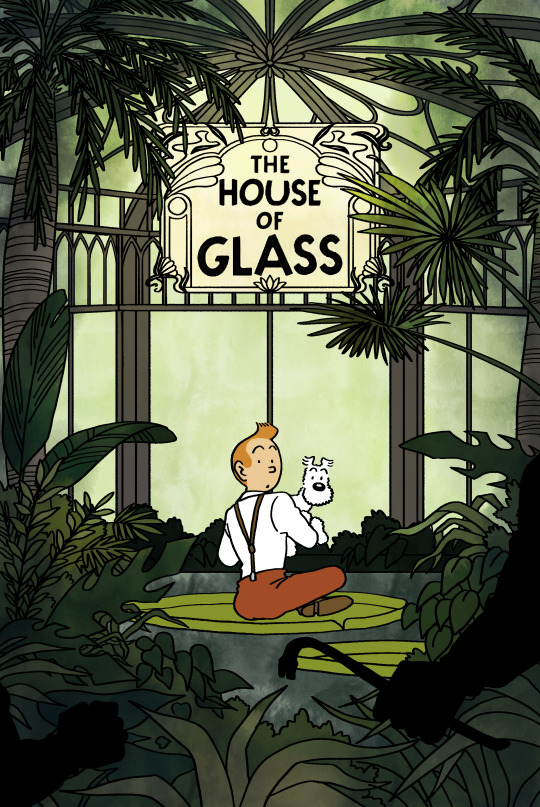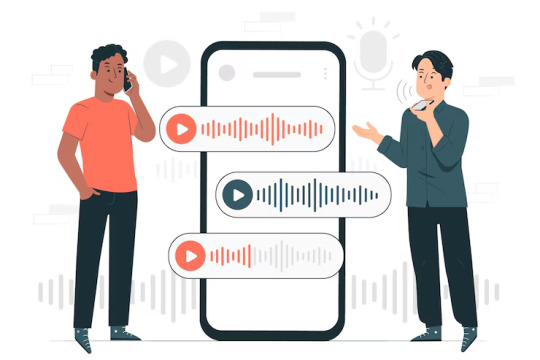#Ticket processing automation
Explore tagged Tumblr posts
Text
Simplify Operations with One Call Ticket Management Solutions
Looking for a seamless way to handle your excavation projects? Explore Norfield Development Partners’ advanced One Call ticket management solutions. Designed to streamline communication between utility providers and excavators, our system ensures accuracy, efficiency, and safety in every project.
With our state-of-the-art platform, you can automate ticket processing, reduce errors, and stay compliant with regulations. Whether you’re a utility company, contractor, or locator, our tools provide real-time tracking, simplified documentation, and robust analytics to keep your operations running smoothly.
Choose Norfield DP for dependable solutions that save time, minimize risks, and enhance collaboration. Visit norfield dp to learn more about our One Call ticket management software and how it can transform your excavation processes today.
#One Call ticket management#One Call management solutions#Ticket processing automation#Norfield ticket management#Utility excavation software#Ticket tracking solutions#Excavation safety tools
0 notes
Text





"But don't let its beauty fool you. This plant can be processed into a powerful neurotoxin which can cause near permanent madness unless treated!"
Professor Calculus, upon developing a state-of-the-art automated hydroponics and pesticides delivery system, has been invited to judge a prestigious international flower show at the largest botanical garden in Belgium.
Botany experts and amateurs from around the world attend - Professor Zalamea is there to showcase his bizarre genetically modified bioluminescent blue oranges, Nash is displaying some of his explorations into living sculpture, and Castafiore is geared up to perform in the evening. Most controversially of all, Professor Fang Hsi Ying, a world leading expert on mental health, is showcasing his research on the Rajaijah plant, a plant historically used to produce madness poison.
It's this exhibit that causes a stir at the event. Security is on high alert. After the poison was used a few years ago in several high profile drug smuggling cases that were embroiled in politics, the plant is anticipated to be a subject of fear and Orientalism. Protestors calling for its destruction flock the event, and there are rumours of a plot to steal the rare plant. The organisers hope that the controversy will generate ticket sales and revenue.
Tintin and Chang are there to report on the goings on, having just confessed their feelings for each other. They're not sure what they are just yet - but even without a madness poison, Tintin's head is in a spin!
I had the idea to bring back Rajaijah juice for some time and was intially going to set it at a garden party, but I received this message from anon some time ago:

And I just loved the Drama of a botanical garden a whole lot more!
Because of the time it takes for me to make stuff and the planning that goes into my posts I do take a very long time to respond to messages, and sometimes multiple people send similar messages anticipating stuff I already have planned, so if I come across as standoffish I apologise, I just have a lot on my plate (by my own design tbh)!
I love every message I receive, I started this blog intending to respond to every message but that's becoming unrealistic ;_; I keep your messages to read back whenever I need motivation, so from the bottom of my heart, thank you if you've sent me an ask!
#tintin#adventures of tintin#animation#2d animation#snowy#milou#captain haddock#archibald haddock#ramo nash#professor calculus#cuthbert calculus#castafiore#bianca castafiore#chang#fang hsi ying#gifset#my stories#gif#the house of glass#fanart#botany#botanic garden#greenhouse#tinchang#long post
3K notes
·
View notes
Text
definitely one of the most difficult moments of my professional career was when i was doing tech support for [REDACTED]'s automated biomed research lab and like. hang on lemme greentext this
>tell them i can fix this issue in half an hour with a remote support session (aka Teamviewer)
>"you want to... control our computers???? over the internet????? like some kind of HACKER???????"
>their IT submits my request to upper management and after two weeks they reluctantly allow me to get remote access to their systems
>by logging into a virtual machine using a 20-digit password and then using a specific program inside of that virtual machine
>while sharing my screen with someone from their IT team the entire time
>finally get remote access to the PC with the issue
>go to open log files to start troubleshooting
>ERROR: User does not have read permissions.
>what the fuck
>ask their IT guy why it's saying that
>"...because we don't want you looking at our stuff, duh?"
>take deep breath before calmly explaining that i need to open files in order to fix their problem
>IT guy submits my request to upper management
>after another week i go through the whole process again but can actually open the log file this time
>cool, it's exactly the issue i thought it was and i know exactly how to solve it
>open the relevant settings file, change a single number, hit Save
>ERROR: User does not have write permissions.
>what the FUCK
>ask IT guy how i'm supposed to fix their system if i can't change literally anything on it
>takes 20 minutes of arguing to get him to admit that maybe i need write access
>he submits the request to upper management
>a week goes by
>upper management denies it
>says i can just verbally tell the IT guy on the call what to type and he'll do it for me
>deep breaths. deep breaths.
>start third remote session
>go to open the relevant .log file in notepad, which isn't the default program it opens with for some reason
>they fucking disabled right clicking
>[REDACTED] has a $118 billion market cap btw
>manage to walk the IT guy through using the command line (which he had never seen before and was scared of) to edit the relevant file
>three weeks go by
>new support ticket in my inbox
>"why didn't your fix fix this completely unrelated issue?"
>they still won't give me write access
>VP of [REDACTED] yells at me in our weekly meeting for taking so long to fix a third unrelated issue they never submitted a ticket for and is also not actually an "issue" but an intended feature of our software that they don't like
>i went to college for this
#second worst part of that job was getting emails from a customer like#“hey can you bump our ticket to the top of the queue? it's really impacting our ability to do research. no pressure though! :)”#and then i'd check who it's from and it's fucking St. Jude's Children's Hospital#“no pressure but you are directly killing kids with cancer”
254 notes
·
View notes
Text

Name: Li'l Marcher
Debut: Yoshi's Crafted World
Remember the joke of Yoshi Tax Fraud? That was really funny as a single Tumblr post! And then not funny at all as a meme. And then kind of funny again when Suppermariobroth unearthed that Yoshi tries to sweettalk people into tax breaks in Fortune Street!
But that is all old news. Let's talk about Yoshi's real, canon crimes! Yoshi has performed a museum heist. Isn't that great?
"No, it's not great. I hate it!"
Oh. Sorry. And who are you?
"I'm Li'l Marcher from Yoshi's Crafted World. And I hate museum heists! Share my story with the world. The people need to know that I hate museum heists."
Yeah okay. Sure. I'll do that. I'm sure people will be very interested in that.
"Thank you. They will. I'll be the next Goomba."

Well, this is Li'l Marcher, and it hates museum heists! Yoshi, on the other hand, loves them, and is sort of just casually looting this place after hours. That's some Wario behavior! But he must be careful, because if he's seen by the automated spotlight, the security system TAKES CONTROL and starts ATTACKING the Yoshi! This security system is the Li'l Marchers, an endless supply of little waddling siren guys.
And being a security system is really their whole thing! If Yoshi is seen, the sirens are released to Get him, but not to alert anyone. Just to Get him. Addressing the fact that this museum is easy enough to enter that a dinosaur got in? No thank you! They just want to kill that intruder and die themselves in the process, because they die instantly upon bumping into Yoshi.

Look at that. Bumbling, I tell you! What's so important about this museum that these bulbs of buffoonery risk their life to protect?

I don't know, but there ARE paintings of Li'l Marchers displayed around the museum! Perhaps they feel in the organization's debt, due to it showing them this appreciation? Or it could be their very own art, and the poor things fear that some of the little culture they have is at risk of theft. Whatever the case, they sure love this painting, because the exact same one is displayed all throughout the stage!
Maybe the true reason they are so dedicated to protecting this museum is that it is frankly just not a good museum. A far below average establishment. The painting is nice, sure, but I only really need to see it once! When you buy a ticket to this museum, proceeds are absolutely not going toward improving its collections. They are instead going to making even more cute little security guards to Kill You. If you're dead, you won't find out that the museum sucks! It's a perfect plan! If you ever plan on going to a bad museum... be careful!
#li'l marcher#lil marcher#yoshi#yoshis crafted world#yoshi's crafted world#yoshi enemies#mario#mario enemies#mod chikako
83 notes
·
View notes
Text
On a 5K screen in Kirkland, Washington, four terminals blur with activity as artificial intelligence generates thousands of lines of code. Steve Yegge, a veteran software engineer who previously worked at Google and AWS, sits back to watch.
“This one is running some tests, that one is coming up with a plan. I am now coding on four different projects at once, although really I’m just burning tokens,” Yegge says, referring to the cost of generating chunks of text with a large language model (LLM).
Learning to code has long been seen as the ticket to a lucrative, secure career in tech. Now, the release of advanced coding models from firms like OpenAI, Anthropic, and Google threatens to upend that notion entirely. X and Bluesky are brimming with talk of companies downsizing their developer teams—or even eliminating them altogether.
When ChatGPT debuted in late 2022, AI models were capable of autocompleting small portions of code—a helpful, if modest step forward that served to speed up software development. As models advanced and gained “agentic” skills that allow them to use software programs, manipulate files, and access online services, engineers and non-engineers alike started using the tools to build entire apps and websites. Andrej Karpathy, a prominent AI researcher, coined the term “vibe coding” in February, to describe the process of developing software by prompting an AI model with text.
The rapid progress has led to speculation—and even panic—among developers, who fear that most development work could soon be automated away, in what would amount to a job apocalypse for engineers.
“We are not far from a world—I think we’ll be there in three to six months—where AI is writing 90 percent of the code,” Dario Amodei, CEO of Anthropic, said at a Council on Foreign Relations event in March. “And then in 12 months, we may be in a world where AI is writing essentially all of the code,” he added.
But many experts warn that even the best models have a way to go before they can reliably automate a lot of coding work. While future advancements might unleash AI that can code just as well as a human, until then relying too much on AI could result in a glut of buggy and hackable code, as well as a shortage of developers with the knowledge and skills needed to write good software.
David Autor, an economist at MIT who studies how AI affects employment, says it’s possible that software development work will be automated—similar to how transcription and translation jobs are quickly being replaced by AI. He notes, however, that advanced software engineering is much more complex and will be harder to automate than routine coding.
Autor adds that the picture may be complicated by the “elasticity” of demand for software engineering—the extent to which the market might accommodate additional engineering jobs.
“If demand for software were like demand for colonoscopies, no improvement in speed or reduction in costs would create a mad rush for the proctologist's office,” Autor says. “But if demand for software is like demand for taxi services, then we may see an Uber effect on coding: more people writing more code at lower prices, and lower wages.”
Yegge’s experience shows that perspectives are evolving. A prolific blogger as well as coder, Yegge was previously doubtful that AI would help produce much code. Today, he has been vibe-pilled, writing a book called Vibe Coding with another experienced developer, Gene Kim, that lays out the potential and the pitfalls of the approach. Yegge became convinced that AI would revolutionize software development last December, and he has led a push to develop AI coding tools at his company, Sourcegraph.
“This is how all programming will be conducted by the end of this year,” Yegge predicts. “And if you're not doing it, you're just walking in a race.”
The Vibe-Coding Divide
Today, coding message boards are full of examples of mobile apps, commercial websites, and even multiplayer games all apparently vibe-coded into being. Experienced coders, like Yegge, can give AI tools instructions and then watch AI bring complex ideas to life.
Several AI-coding startups, including Cursor and Windsurf have ridden a wave of interest in the approach. (OpenAI is widely rumored to be in talks to acquire Windsurf).
At the same time, the obvious limitations of generative AI, including the way models confabulate and become confused, has led many seasoned programmers to see AI-assisted coding—and especially gung-ho, no-hands vibe coding—as a potentially dangerous new fad.
Martin Casado, a computer scientist and general partner at Andreessen Horowitz who sits on the board of Cursor, says the idea that AI will replace human coders is overstated. “AI is great at doing dazzling things, but not good at doing specific things,” he said.
Still, Casado has been stunned by the pace of recent progress. “I had no idea it would get this good this quick,” he says. “This is the most dramatic shift in the art of computer science since assembly was supplanted by higher-level languages.”
Ken Thompson, vice president of engineering at Anaconda, a company that provides open source code for software development, says AI adoption tends to follow a generational divide, with younger developers diving in and older ones showing more caution. For all the hype, he says many developers still do not trust AI tools because their output is unpredictable, and will vary from one day to the next, even when given the same prompt. “The nondeterministic nature of AI is too risky, too dangerous,” he explains.
Both Casado and Thompson see the vibe-coding shift as less about replacement than abstraction, mimicking the way that new languages like Python build on top of lower-level languages like C, making it easier and faster to write code. New languages have typically broadened the appeal of programming and increased the number of practitioners. AI could similarly increase the number of people capable of producing working code.
Bad Vibes
Paradoxically, the vibe-coding boom suggests that a solid grasp of coding remains as important as ever. Those dabbling in the field often report running into problems, including introducing unforeseen security issues, creating features that only simulate real functionality, accidentally running up high bills using AI tools, and ending up with broken code and no idea how to fix it.
“AI [tools] will do everything for you—including fuck up,” Yegge says. “You need to watch them carefully, like toddlers.”
The fact that AI can produce results that range from remarkably impressive to shockingly problematic may explain why developers seem so divided about the technology. WIRED surveyed programmers in March to ask how they felt about AI coding, and found that the proportion who were enthusiastic about AI tools (36 percent) was mirrored by the portion who felt skeptical (38 percent).
“Undoubtedly AI will change the way code is produced,” says Daniel Jackson, a computer scientist at MIT who is currently exploring how to integrate AI into large-scale software development. “But it wouldn't surprise me if we were in for disappointment—that the hype will pass.”
Jackson cautions that AI models are fundamentally different from the compilers that turn code written in a high-level language into a lower-level language that is more efficient for machines to use, because they don’t always follow instructions. Sometimes an AI model may take an instruction and execute better than the developer—other times it might do the task much worse.
Jackson adds that vibe coding falls down when anyone is building serious software. “There are almost no applications in which ‘mostly works’ is good enough,” he says. “As soon as you care about a piece of software, you care that it works right.”
Many software projects are complex, and changes to one section of code can cause problems elsewhere in the system. Experienced programmers are good at understanding the bigger picture, Jackson says, but “large language models can't reason their way around those kinds of dependencies.”
Jackson believes that software development might evolve with more modular codebases and fewer dependencies to accommodate AI blind spots. He expects that AI may replace some developers but will also force many more to rethink their approach and focus more on project design.
Too much reliance on AI may be “a bit of an impending disaster,” Jackson adds, because “not only will we have masses of broken code, full of security vulnerabilities, but we'll have a new generation of programmers incapable of dealing with those vulnerabilities.”
Learn to Code
Even firms that have already integrated coding tools into their software development process say the technology remains far too unreliable for wider use.
Christine Yen, CEO at Honeycomb, a company that provides technology for monitoring the performance of large software systems, says that projects that are simple or formulaic, like building component libraries, are more amenable to using AI. Even so, she says the developers at her company who use AI in their work have only increased their productivity by about 50 percent.
Yen adds that for anything requiring good judgement, where performance is important, or where the resulting code touches sensitive systems or data, “AI just frankly isn't good enough yet to be additive.”
“The hard part about building software systems isn't just writing a lot of code,” she says. “Engineers are still going to be necessary, at least today, for owning that curation, judgment, guidance and direction.”
Others suggest that a shift in the workforce is coming. “We are not seeing less demand for developers,” says Liad Elidan, CEO of Milestone, a company that helps firms measure the impact of generative AI projects. “We are seeing less demand for average or low-performing developers.”
“If I'm building a product, I could have needed 50 engineers and now maybe I only need 20 or 30,” says Naveen Rao, VP of AI at Databricks, a company that helps large businesses build their own AI systems. “That is absolutely real.”
Rao says, however, that learning to code should remain a valuable skill for some time. “It’s like saying ‘Don't teach your kid to learn math,’” he says. Understanding how to get the most out of computers is likely to remain extremely valuable, he adds.
Yegge and Kim, the veteran coders, believe that most developers can adapt to the coming wave. In their book on vibe coding, the pair recommend new strategies for software development including modular code bases, constant testing, and plenty of experimentation. Yegge says that using AI to write software is evolving into its own—slightly risky—art form. “It’s about how to do this without destroying your hard disk and draining your bank account,” he says.
8 notes
·
View notes
Note
A bit embarrassing, but I'm new to discord and I'm completely lost as to how age verification goes. Is it automated - do I simply check that I'm an adult and that's it - or do I show you/a mod my ID? Would there be any problems in case I'm not american? Truly sorry to bother you about this! Your channel is one of the reasons I even bothered to create an account 💔
Please don’t be embarrassed, discord can be a bit confusing at first! I’m honored that this was one of the reasons you made an account 😭💕 & the question isn’t a bother at all!
The age verification process is explained in the rules section of the server. You will need to show your ID (with everything crossed out & hidden, except for your age) to me or a mod. You don’t need to be american & the ID doesn’t need to be in English! As long as it shows your date of birth you’re good 👍👍
If you have more questions you can dm me as well! I put instructions with pics under the cut if that helps too!
Start by reading the rules!

Next, go to the #open-a-ticket channel

Press the blue “Open a ticket!” button. This creates a private channel that only you, the mods, and I can see.

Go to the new private channel! It will be called #ticket followed by a number.

Take a picture of your ID with everything crossed out and hidden except for your date of birth. Also include a piece of paper with 3 hearts written on it next to your ID in the pic so I know you took it & didn’t find a pic online. Send that photo in the private channel here! The mods and I will be notified, and one of us will verify your age so you can access the server, and we’ll close + delete the private channel and pics in it.
32 notes
·
View notes
Text
at work: reply to various comments on tickets
apply to three jobs
exercise + walk + get mail
guitar practice (nanobots, bells, new lessons, riffs, scales)
kanji flashcards
draft map sequence
read more of book trade book
various failures. a great deal of them can be accounted for by spending like four hours this morning playing Blue Prince, which is this perfect combination of frustrating and absorbing to make me go "okay just one more run- this time i know what to do!" repeatedly. i've used several floppy disks and acquired an allowance.
but also: a thing came up at work that ended up taking more time than expected, and it turns out applying to three jobs is not a trivial task- knowing i have the skills to do most of these jobs, it's now a matter of sorting through tons of chaff to find jobs that don't suck, and sometimes filling out huge forms only to be told by an automated filter that 9 years of experience with Node.js i put in the dropdown is not enough and i needed to lie and put 10+ so therefore my essay-length responses have been discarded. what a truly miserable process.
6 notes
·
View notes
Text
Thailand Visa Exemptions
1. Legislative Framework and Policy Evolution
1.1 Statutory Basis
Governed by Sections 12 and 35 of the Immigration Act B.E. 2522 (1979)
Implemented through Ministerial Regulation No. 28 (B.E. 2544)
Modified by Cabinet Resolution (November 2022) extending 45-day stays until November 2025
1.2 Bilateral vs. Unilateral Agreements
Reciprocal Exemptions (12 countries including Brazil, South Korea, Peru)
90-day stays
Multiple-entry privileges
Unilateral Exemptions (56 countries)
Standard 30-day stays
45-day temporary extension for air arrivals
1.3 Historical Policy Shifts
2008: Introduction of 15-day land border restrictions
2016: Implementation of biometric tracking
2022: Temporary 45-day extension to boost tourism
2. Eligibility and Entry Protocols
2.1 Nationality-Based Classification
Passport TypeDurationEntry MethodExtension EligibilityG7 Nations45 days*Air onlyYes (30 days)ASEAN Members30 daysAir/LandNoDeveloping Economies15-30 daysConditionalVaries
*Until November 2025 per Cabinet Resolution
2.2 Document Verification Matrix
Mandatory Documents:
Passport (6+ months validity)
Onward ticket (confirmed within exemption period)
Proof of funds (THB 20,000/person)
Secondary Checks:
Previous Thai visa history (12-month lookback)
Accommodation verification
3. Immigration Assessment Algorithms
3.1 Risk-Based Screening System
Primary Inspection:
Machine-readable zone scan
Interpol database check
Facial recognition matching
Secondary Screening Triggers:
4+ visa exemptions in 12 months
Suspicious travel patterns
Incomplete documentation
3.2 Discretionary Denial Factors
Red Flags:
Previous overstays (even if paid)
Employment-seeking behavior
Frequent border runs
4. Border-Specific Implementation
4.1 Airport Processing
Dedicated Visa-Exempt Lanes at 6 international airports
Automated Immigration Gates (e-Gates) for eligible nationalities
Transit Without Visa (TWOV):
72-hour limit
Confirmed onward ticket required
4.2 Land Border Restrictions
15-Day Maximum Stay at 52 designated checkpoints
Entry Quotas:
2 land crossings per calendar year (2024 policy)
Exceptions for border pass holders
5. Extension and Conversion Mechanics
5.1 Extension of Stay
Single 30-Day Extension:
THB 1,900 fee
TM.7 form submission
Proof of address required
Exceptional Cases:
Medical treatment
Force majeure events
5.2 Visa Conversion Options
Non-Immigrant Pathways:
Business (B): Requires THB 25,000 application fee
Retirement (O): Age 50+ with financial proof
Education (ED): Enrollment in accredited institution
6. Compliance and Enforcement
6.1 Overstay Penalties
Fine Structure:
THB 500/day (maximum THB 20,000)
Automatic blacklisting after 90+ days
Voluntary Departure Program:
7-day grace period at airports
6.2 Visa-Run Monitoring
Automated Tracking System:
Flags frequent exempt entries
Calculates denial probability score
7. Special Case Analyses
7.1 Diplomatic/Official Passports
90-Day Exemption regardless of nationality
Exempt from:
Financial proof requirements
Onward ticket verification
7.2 Crew Member Privileges
72-Hour Shore Leave:
Valid with approved crew documentation
Separate from passenger exemptions
8. Emerging Policy Developments
9.1 Digital Integration
E-Arrival Card System (2024 rollout)
Blockchain Travel History (Phase 1 testing)
9.2 Security Enhancements
Biometric Exit System (Full implementation 2025)
API Integration with INTERPOL databases
9. Strategic Entry Planning
10.1 For Frequent Travelers
Alternative Solutions:
METV (6-month multiple entry)
Elite Visa (5-20 year options)
Entry Pattern Management:
Minimum 21-day intervals between exempt entries
Rotate entry points (BKK/DMK/HKT)
10.2 For Long-Term Stays
Conversion Timing:
Optimal window: Days 1-15 of entry
Avoid holiday periods
Document Preparation:
Pre-legalized paperwork
Financial trail establishment
#thailand#immigration#thai#thailandvisa#thaivisa#visa#immigrationinthailand#thaivisaexemptions#thailandvisaexemptions#visaexemptions
3 notes
·
View notes
Text
i've been mentally sketching out a set of rules and strategies for what a "terf-reporting discord" might look like and so far what i have is
anonymized. do not use your primary discord account, this is to protect you in case of infiltration. do not use it to meet other people on the server, it's best if none of us know who the others are. this does introduce its own problems (like infiltration)
using a secondary account to submit reports is also recommended, this is to protect you in case of retaliation from staff. compartmentalization is key, do not make it easy to affiliate your secondary accounts with your primary ones
prioritize mass-reporting terfs who have genuinely said something that is obviously and indefensibly way out of line, and continue submitting reports until they are deleted. if this gives a better understanding of how the reporting process works, sufficient to target what i would call "insignificant outlying terfs," it may be worthwhile, but i think simply getting rid of the loudest and worst would go a long way
evidence that they have remade is a golden ticket. it's easier to get someone banned again if they've been banned before, doubly so if they admit their previous url
hopefully this is obvious, but targeting someone who is 30 is preferable to targeting someone who is 15
do not interact with them. while i can see utility to infiltrating their circles to disrupt them or gain information on how to find and report them again beyond a remake, i don't think it's worth it, particularly because it provides them counteroffensive ammunition and it would be easy to get crypto-terf-jacketed
while i think we are well past the point where this can be attributed solely to incompetence, there are several facts about the incompetence that could be useful. i believe the way the reporting process works involves automating the priority of the queue for manual review based on number of reports. one person reporting a large number of accounts will likely go nowhere, if not being automatically discarded
i wouldn't rule out buying off moderators, since that's what they've done, but i can't imagine how to begin that process and i can't foresee it ending well
we've talked a lot about litigation, since it does have a proven track record. is anyone willing to put their whole legal name in the public record in order to actually do it? (if so, it may be best to administrate that entirely separately, with no overlapping actors)
i say this every day as general best practice advice, but again, don't use the app! use firefox with adblock, privacy badger, and noscript. this is, again, to protect you by minimizing available data collection
unfortunately i don't know anything about administrating a discord server so this is all a bit academic. unless there's enough interest to actually follow through. in which case i'm botching my own rules by posting this on main but i'm not really sure how else to gauge interest
14 notes
·
View notes
Text
Revolutionize Utility Damage Prevention with Norfield’s 811 Ticket Management Software
In today’s fast-paced world, effective utility damage prevention is more critical than ever. Norfield’s 811 Ticket Management Software simplifies and streamlines the entire process of managing 811 tickets, ensuring your utility marking and excavation projects are handled efficiently and safely. As a trusted provider, Norfield brings innovation and precision to utility management, reducing risks associated with underground damages and project delays.
Designed for utility locators, contractors, and project managers, this software provides a user-friendly platform that centralizes ticket handling and coordination. It automates ticket processing, improves communication between stakeholders, and tracks every project step—from initial requests to final clearances—making it easier to ensure compliance with regulatory standards. Norfield’s 811 Ticket Management Software also offers real-time updates, helping teams stay informed and respond swiftly to changes or new information. By optimizing workflows, users can minimize errors, reduce miscommunication, and enhance productivity.
What sets Norfield apart is its commitment to a smooth user experience, with tailored features like customized reporting, detailed mapping integrations, and efficient scheduling tools. Whether you're overseeing large-scale construction or small utility projects, Norfield’s software adapts to your needs, making it ideal for a wide range of industries, including telecom, gas, water, and electrical services.
If your goal is to ensure safe digging practices while meeting project deadlines, Norfield’s 811 Ticket Management Software is the ultimate solution. Explore the many ways it can enhance safety, accountability, and operational efficiency for your organization. With an emphasis on security and data accuracy, Norfield's technology stands out as an essential tool for any company involved in utility management and excavation.
Visit Norfield’s website today to learn more about how 811 Ticket Management Software can transform your utility operations.
#811 ticket management software#utility damage prevention software#811 software solutions#excavation project management#underground utility management#ticket processing automation
0 notes
Text
instagram
It can't hurt to start a discussion. My current ticket is Pete and....TBD probably one of the many amazing strong women who are leading the charge. I just know we need to see our country moving the right direction again and I do not believe that many people support what is going on right now.
I’m running for President in 2028. 🗳️
My first act will be an Executive Order reversing anything signed by Felon Donald Trump.
…next will be term and age limits for Congress and Supreme Court.
Expand the Supreme Court to at least 13.
Make sure billionaires can no longer purchase elections from the people.
Balance our budget for the first time since 1996.
Eliminate price gouging of Americans.
Study Universal Basic Income and its possible need as more jobs become automated over the coming decades.
Deploy law enforcement and IRS to recoup all stimulus money and covid business loans from former members of Congress.
Regulate crypto so Americans stop getting robbed by influencers and wealthy crooks.
Ensure the survival of Social Security and Medicaid.
Raise the federal minimum wage.
Election reform, focused on rank-choice voting and more viable political parties.
Ensure every United States Veteran has healthcare and a roof of some kind over their heads.
Revamping our immigration system to make the process take six months instead of six years.
Retraining Americans for jobs of the future and skilled trades so the system doesn’t have to support them. Work with Mexico to build a border wall that benefits us both. There is no reason we shouldn’t be building solar and other renewables at the border, which we’d split with Mexico 50/50 to pay for the wall and its maintenance longterm.
Expand access to paid family leave, sick leave, and childcare.
Oversight of AI platforms.
Earmark federal funds to build homeless communities with night security. This will cut down on panhandling and tent cities popping up in unwanted areas while ensuring our unhoused population have a secure place to sleep and get water.
2 notes
·
View notes
Text
How Enterprises Use Voice APIs for Call Routing and IVR Automation
Enterprises today handle thousands of customer calls every day. To manage these efficiently, many are turning to voice APIs. These tools help businesses automate call routing and interactive voice response (IVR) systems.

What Are Voice APIs?
Voice APIs are software interfaces that allow developers to build voice-calling features into apps or systems. These APIs can trigger actions like placing calls, receiving them, or converting speech to text. For enterprises, voice APIs make it easy to integrate intelligent call handling into their workflow.
Smarter Call Routing
Call routing directs incoming calls to the right agent or department. With voice APIs, this process becomes dynamic and rules based.
For example, a customer calling from a VIP number can be routed directly to a premium support team. APIs allow routing rules based on caller ID, time of day, location, or even previous interactions. This reduces wait times and improves customer satisfaction.
Automated IVR Systems
Interactive Voice Response (IVR) lets callers interact with a menu system using voice or keypad inputs. Traditional IVR systems are rigid and often frustrating.
Voice APIs enable smarter, more personalized IVR flows. Enterprises can design menus that adapt in real time. For instance, returning callers may hear different options based on their past issues. With speech recognition, users can speak naturally instead of pressing buttons.
Scalability and Flexibility
One major benefit of using voice API is scalability. Enterprises don’t need physical infrastructure to manage call volume. The cloud-based nature of voice APIs means businesses can handle spikes in calls without losing quality.
Also, changes to call flows can be made quickly. New routing rules or IVR scripts can be deployed without touching hardware. This agility is crucial in fast-moving industries.
Enhanced Analytics and Integration
Voice APIs also provide detailed data. Enterprises can track call duration, drop rates, wait times, and common IVR paths. This data helps optimize performance and identify pain points.
Moreover, APIs easily integrate with CRMs, ticketing systems, and analytics tools. This ensures a seamless connection between calls and other business processes.
Final Thoughts
Voice APIs are transforming how enterprises manage voice communications. From intelligent call routing to adaptive IVR systems, the benefits are clear. Enterprises that adopt these tools gain speed, efficiency, and better customer experience, and that too without a lot of effort.
4 notes
·
View notes
Text
Role of AI and Automation in Modern CRM Software
Modern CRM systems are no longer just about storing contact information. Today, businesses expect their CRM to predict behavior, streamline communication, and drive efficiency — and that’s exactly what AI and automation bring to the table.

Here’s how AI and automation are transforming the CRM landscape:
1. Predictive Lead Scoring
Uses historical customer data to rank leads by conversion probability
Prioritizes outreach efforts based on buying signals
Reduces time spent on low-potential leads
Improves sales team performance and ROI
2. Smart Sales Forecasting
Analyzes trends, seasonality, and deal history to forecast revenue
Updates projections in real-time based on new data
Helps sales managers set realistic targets and resource plans
Supports dynamic pipeline adjustments
3. Automated Customer Support
AI-powered chatbots handle FAQs and common issues 24/7
Sentiment analysis flags negative interactions for human follow-up
Automated ticket routing ensures faster resolution
Reduces support workload and boosts satisfaction
4. Personalized Customer Journeys
Machine learning tailors emails, offers, and messages per user behavior
Automation triggers based on milestones or inactivity
Custom workflows guide users through onboarding, upgrades, or renewals
Improves customer engagement and retention
5. Data Cleanup and Enrichment
AI tools detect duplicate records and outdated info
Automatically update fields from verified external sources
Maintains a clean, high-quality CRM database
Supports better segmentation and targeting
6. Workflow Automation Across Departments
Automates repetitive tasks like task assignments, follow-ups, and alerts
Links CRM actions with ERP, HR, or ticketing systems
Keeps all teams aligned without manual intervention
Custom CRM solutions can integrate automation tailored to your exact process
7. Voice and Natural Language Processing (NLP)
Transcribes sales calls and highlights key insights
Enables voice-driven commands within CRM platforms
Extracts data from emails or chat for automatic entry
Enhances productivity for on-the-go users
#AICRM#AutomationInCRM#CRMSolutions#SmartCRM#CRMDevelopment#AIinBusiness#TechDrivenSales#CustomerSupportAutomation#CRMIntegration#DigitalCRM
2 notes
·
View notes
Text
Nonprofit Software: A Key to Efficient Mission Management
Nonprofit organizations operate in a challenging environment where maximizing impact is essential while keeping administrative costs low. Managing donations, volunteers, events, and operational workflows can be overwhelming without the right tools. Nonprofit software has emerged as a vital solution, tailored to address the specific needs of mission-driven organizations. These tools streamline operations, enhance donor engagement, and ultimately help nonprofits achieve their goals more effectively.
In this article, we’ll explore the types, benefits, and future of nonprofit software, shedding light on how it empowers organizations to thrive in today’s competitive landscape.
What is Nonprofit Software?
Nonprofit software refers to digital tools and platforms specifically designed to help nonprofits manage their operations efficiently. Unlike generic software, nonprofit-specific tools address core needs such as donor relationship management, fundraising, volunteer coordination, grant tracking, and financial reporting. With features tailored to their unique challenges, nonprofits can save time, optimize resources, and focus on their missions.
Types of Nonprofit Software
Donor Management Software Also known as nonprofit CRM (Customer Relationship Management), donor management software helps organizations track donor interactions, manage contributions, and personalize engagement. Tools like Bloomerang, DonorPerfect, and Little Green Light simplify donor retention and make campaigns more effective.
Fundraising Software Platforms like Classy, Givebutter, and Fundly empower nonprofits to create online fundraising campaigns, process donations, and analyze results. Peer-to-peer fundraising, recurring donations, and mobile giving features enhance the donor experience.
Volunteer Management Tools Managing volunteers is essential for many nonprofits. Tools like VolunteerHub and SignUpGenius streamline recruitment, scheduling, and communication, ensuring an organized and engaged volunteer base.
Grant Management Software Grant tracking tools such as Foundant or Submittable help nonprofits identify funding opportunities, submit applications, and manage deadlines and compliance, improving the chances of securing vital grants.
Accounting and Financial Management Software Nonprofits need tools to maintain transparency and manage budgets. Accounting software like QuickBooks for Nonprofits or Aplos ensures accurate reporting, proper fund allocation, and regulatory compliance.
Event Management Software Nonprofits often rely on events to engage supporters and raise funds. Tools like Eventbrite or Cvent simplify event planning, ticketing, and attendee management, creating seamless experiences for donors and participants.
Benefits of Nonprofit Software
Operational Efficiency Nonprofit software automates routine tasks such as data entry, reporting, and communication, allowing staff to focus on mission-critical activities.
Improved Donor Relationships With donor management tools, nonprofits can personalize outreach, track giving history, and maintain strong relationships that increase donor retention.
Transparency and Accountability Financial and grant management tools ensure that nonprofits comply with regulations and demonstrate transparency to stakeholders, boosting credibility.
Better Decision-Making Analytics and reporting features provide valuable insights into campaign performance, donor behavior, and operational efficiency, enabling data-driven decisions.
Scalability As nonprofits grow, software solutions can scale to accommodate larger donor bases, expanded programs, and increasing complexity.
Challenges of Implementing Nonprofit Software
While nonprofit software offers significant benefits, organizations may face challenges, including:
Budget Constraints: Even with nonprofit discounts, advanced tools can strain limited budgets.
Learning Curve: Staff and volunteers may require training to use the software effectively.
Integration Issues: Ensuring new tools work seamlessly with existing systems can be complex.
Data Security: Protecting sensitive donor and organizational data is crucial and requires robust security measures.
Organizations should evaluate their specific needs, select user-friendly tools, and partner with providers offering support and training to overcome these challenges.
Future of Nonprofit Software
The future of nonprofit software lies in innovation and technology integration. Artificial intelligence (AI) is already being used to predict donor behavior, optimize outreach, and analyze trends. Blockchain technology is enhancing transparency in donation tracking, while virtual reality (VR) is creating immersive experiences to engage donors. These advancements will further empower nonprofits to achieve their missions efficiently and effectively.
Conclusion
Nonprofit software is transforming the way mission-driven organizations operate. From donor management and fundraising to financial tracking and volunteer coordination, these tools address the unique challenges nonprofits face. By adopting the right software solutions, organizations can save time, optimize resources, and focus on what truly matters—making a difference in the world.
As technology continues to evolve, nonprofit software will remain a cornerstone of effective mission management, helping organizations thrive in a rapidly changing environment. For nonprofits seeking to maximize their impact, investing in the right software is not just an option—it’s a necessity.
3 notes
·
View notes
Text
High-Ticket Affiliate Programs: A Comprehensive Guide for 2025
High-ticket affiliate marketing represents a strategic approach to generating substantial commissions through the promotion of premium products and services.
Unlike traditional affiliate marketing that focuses on high-volume, low-commission items, high-ticket affiliate programs offer significantly larger earnings per sale, often ranging from $500 to several thousand dollars per transaction.
The primary advantage of pursuing high-ticket affiliate programs lies in their potential for generating meaningful income with fewer sales. For instance, promoting a $2,000 product with a 40% commission yields $800 per sale, equivalent to selling eighty $10 products at a 10% commission rate.
Top High-Ticket Affiliate Programs for Serious Marketers
When evaluating high-ticket affiliate marketing opportunities, several programs stand out for their exceptional earning potential and professional support structures:
Digital Education Platforms
Commission rates: 30-50% per sale
Average product value: $1,000-$3,000
Comprehensive training materials included
Enterprise Software Solutions
Commission rates: 20-40% per sale
Average product value: $2,500-$10,000
Recurring commission opportunities
Enterprise Software Solutions
Commission rates: 15-30% per sale
Average booking value: $5,000-$15,000
Exclusive partnership opportunities
Essential Steps to Start High-Ticket Affiliate Marketing Successfully
Success in high-ticket affiliate marketing requires a strategic approach:
Market Research and Selection Begin by identifying your target audience and understanding their specific needs. High-ticket products require a more sophisticated approach to market analysis, focusing on demographics with substantial purchasing power.
Platform Development Establish a professional online presence through:
A professionally designed website
Authoritative content development
Strategic social media positioning
Relationship Building Develop strong relationships with:
Program vendors
Industry influencers
Potential customers through value-driven content
Advanced Strategies for Promoting High-Ticket Affiliate Products
To maximize success in high-ticket affiliate marketing, implement these advanced strategies:
Content Marketing Excellence Create comprehensive content that demonstrates expertise and builds trust. This includes:
Detailed product reviews
Case studies
Expert interviews
Educational webinars
Email Marketing Automation Develop sophisticated email sequences that:
Nurture potential customers
Provide valuable insights
Build credibility over time
Guide prospects through the decision-making process
Personal Brand Development Establish yourself as an authority in your chosen niche by:
Speaking at industry events
Publishing thought leadership content
Participating in professional networks
Showcasing successful case studies
Success in high-ticket affiliate marketing stems from building genuine relationships and providing substantial value to your audience. Focus on understanding your target market's needs and consistently delivering solutions that address their specific challenges. Remember that while the commission potential is significant, the responsibility to provide accurate, valuable information to your audience is paramount.
3 notes
·
View notes
Text
What are the pros and cons of ITIL and ServiceNow ITSM?
ServiceNow ITSM Implementation Services

ITIL is a widely and commonly accepted framework used for managing IT services and ServiceNow ITSM is a majorly leveraged platform that brings these best practices to life with its implementation. They help businesses to deliver more reliable, efficient and user-focused IT support with its adaptation. However, like any system, there are benefits and challenges to consider.
Pros -
Organized IT Process:
ITIL assists and grants a clear structure for managing IT services, while ServiceNow ITSM aids the teams to follow a standard operating through structure with automated workflows. As the initiative assures that the frequency of consistency and lowered errors, makes the process easier to handle daily operations with its smooth implementations into the system.
Faster Response & Quick Resolution:
ServiceNow ITSM automates the tasks i.e. ticket creation, assignment, and status updates with its leveraging into the system. This speeds up how fast the IT teams and working professionals respond to raised concern and resolve the issue by improving the service quality of the deliverables.
Self-Service and User Empowerment:
As the users can access for help through self-service portals and knowledge bases without needing to contact IT teams directly or reach-out the assistance window. This lowers the number of support requests and gives users quicker solutions.
Performance Tracking and Insights:
With the assistance of real-time dashboards and data analytics reports, the IT managers and senior officials can monitor their activity and, track the service trends, and identify areas for improvement. This data-driven approach leads to better planning and resource management.
Alignment with Industry Standards:
ServiceNow ITSM supports ITIL out of the box ideas as it assure businesses can easily adopt and get globally recognized with the standard practices that are set as per business standards. This all improves the compliance process and service for overall consistency across the working professionals.
Cons -
Complex Implementation:
Setting up ITIL processes and systems on ServiceNow requires proper planning and technical knowledge without it may get stuck up or entitled up and leads towards a system mess. Without prior guidance or experience, implementation can become a massive crushing stone for the organization.
High Costs:
Sometimes, the licensing fees and setup costs with customizations can be expensive or costly, especially for small or mid-sized companies and organizations. With the constant ongoing support and training add a loop or hole to the investment of the business and set up as a major drawback for the company..
User Adoption Challenges:
Switching between multiple or into a new system may face resistance from employees who are used to older methods. At the same time, the improper onboarding session and training might seem essential for a smooth transition but might get tangled up.
ServiceNow ITSM boosts IT efficiency, streamlines processes, and increases service delivery. With expert guidance from providers like Suma Soft, INRY, Fidel Technologies, and Glidefast, businesses can maximize their benefits while overcoming challenges.
#it services#technology#software#saas#saas development company#digital transformation#saas technology
2 notes
·
View notes